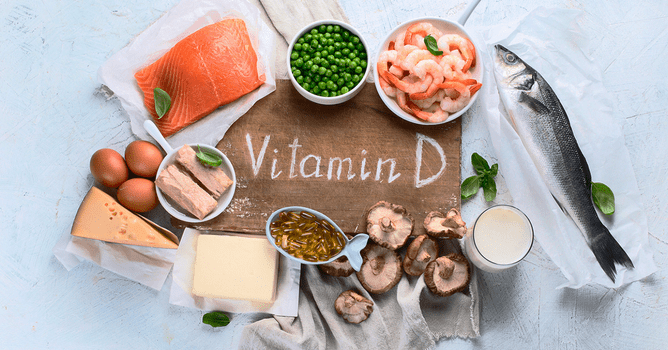Vitamin D is largely linked to bone health but is also crucial for your skin's health
With more and more research showing that most of our population don't get enough vitamin D, you might be wondering if a vitamin D deficiency is actually a big deal for your overall health and well-being. Did you know in NZ, 1 in 10 are deficient in it !! Crazy huh.
Getting enough vitamin D can impact your health in many ways, especially when it comes to your skin.
Vitamin D is most often associated with bone health. Vitamin D is known to be a fat-soluble vitamin that is responsible for calcium homeostasis and bone health. It also increases the efficiency of calcium and phosphorus absorption from the small intestine and aids in the maturation of osteoclasts in the bone.
Healthy levels of vitamin D have been demonstrated to prevent skin aging, promote healthy bone growth, possibly reduce the risk of certain cancers, and even improve mood.
There are several ways that being vitamin D deficient might impact your skin.
The best way to get vitamin D is from the sun.
Your skin is your body's largest organ, and the skin is much more closely linked to your overall health than many people even realize. But given the risks of sun exposure and skin cancer how are we able safely expose our skin to the sun to reap the benefits of natural vitamin D without damaging our skin?
The sun is an important source for vitamin D in a person who does not have a diet rich in these food. The key to remember with sun exposure, however, is that you do not need a sunburn to get a healthy amount of vitamin D. It is perfectly okay to spend time outdoors safely to improve your vitamin D levels but avoiding a sunburn is key.
Healthy vitamin D levels might help prevent skin from prematurely aging, but there's an important caveat.
Healthy levels of vitamin D have been demonstrated to prevent skin aging. Skin aging can be demonstrated molecularly, by the shortening of telomeres, the caps of genetic material on the free ends of DNA strands. These telomeres shorten with age, rendering the DNA more and more unstable, until the cell dies.
Vitamin D is crucial for skin protection. Further, calcitriol (the active form of vitamin D) helps in skin cell growth, repair, and metabolism as well as prevents skin aging.
Although sun exposure gives us a quick way to increase out vitamin D levels, too much sun exposure can lead to accelerated skin aging as ultraviolet light (sun light) does cause direct DNA damage, skin injury and skin cancers. Hence, sunlight is not the best way to get your vitamin D.
Apart from taking vitamin D supplements, a vitamin D rich diet is the best place to start. And if you do expose your skin to direct sun light a good zinc based sunblock will help to protect your skin from sun damage.
Facts
Vitamin D is also very protective of our health with evidence showing an association between low vitamin D levels and increased risk of colorectal cancer and cardiovascular disease. In fact, if your blood serum levels fall within the bottom 25 percent of what is considered normal, this significantly increases your likelihood of dying from most of the common diseases.
So what are the chances you fall into the low vitamin D risk category?
There is actually a good chance as 30% of the population have been found to be deficient in vitamin D and this is especially true if you avoid the sun or use lots of sun protection.
In the past it was very difficult to get a blood test to measure your vitamin D levels unless you suffered from a bone disease. Luckily this has recently changed and your doctor is able to order a test or you can simply turn up at your local laboratory and pay for a test, you don’t even need a script from your doctor. Our local laboratory is Pathlab and it costs $30 to be tested with the results being reported directly to you and your doctor.
So what blood serum levels do you need?
Levels of 25-hydroxyvitamin D of below 25 nmol/L are considered deficient.
Levels of between 25-50 nmol/L are sub-optimal
Levels of over 50 nmol/L are optimal however some literature advises you whould aim for above 75 nmol/L to help prevent disease
Although no safe upper level of 25-hydroxyvitamin D has been identified, treatment to levels above 125 nmol/L is not recommended.
So get yourself checked if you think you could be low. It might be one of the best things you do all year to ensure a long and healthy life!





